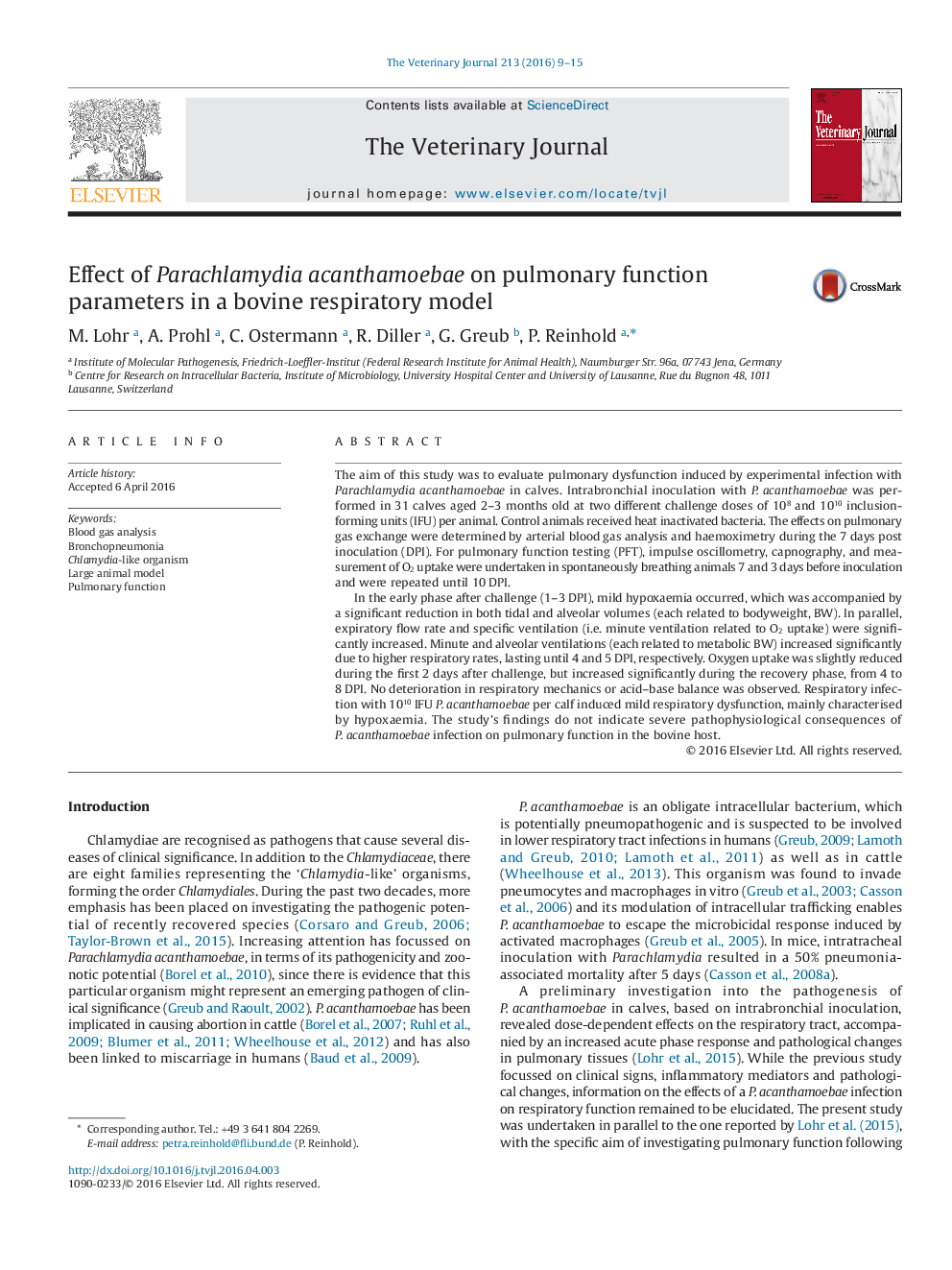| کد مقاله | کد نشریه | سال انتشار | مقاله انگلیسی | نسخه تمام متن |
|---|---|---|---|---|
| 2463681 | 1555230 | 2016 | 7 صفحه PDF | دانلود رایگان |
• Pneumopathogenicity of Parachlamydia acanthamoebae seems to be limited in calves.
• Mild respiratory dysfunction resulted from a challenge with 1010 inclusion-forming units (IFU) per calf.
• Mild hypoxaemia in arterial blood induced an enhanced breathing effort.
• Increase in respiratory rate and alveolar ventilation ensured oxygen uptake.
• Respiratory mechanics were not affected by parachlamydial lung infection.
The aim of this study was to evaluate pulmonary dysfunction induced by experimental infection with Parachlamydia acanthamoebae in calves. Intrabronchial inoculation with P. acanthamoebae was performed in 31 calves aged 2–3 months old at two different challenge doses of 108 and 1010 inclusion-forming units (IFU) per animal. Control animals received heat inactivated bacteria. The effects on pulmonary gas exchange were determined by arterial blood gas analysis and haemoximetry during the 7 days post inoculation (DPI). For pulmonary function testing (PFT), impulse oscillometry, capnography, and measurement of O2 uptake were undertaken in spontaneously breathing animals 7 and 3 days before inoculation and were repeated until 10 DPI.In the early phase after challenge (1–3 DPI), mild hypoxaemia occurred, which was accompanied by a significant reduction in both tidal and alveolar volumes (each related to bodyweight, BW). In parallel, expiratory flow rate and specific ventilation (i.e. minute ventilation related to O2 uptake) were significantly increased. Minute and alveolar ventilations (each related to metabolic BW) increased significantly due to higher respiratory rates, lasting until 4 and 5 DPI, respectively. Oxygen uptake was slightly reduced during the first 2 days after challenge, but increased significantly during the recovery phase, from 4 to 8 DPI. No deterioration in respiratory mechanics or acid–base balance was observed. Respiratory infection with 1010 IFU P. acanthamoebae per calf induced mild respiratory dysfunction, mainly characterised by hypoxaemia. The study's findings do not indicate severe pathophysiological consequences of P. acanthamoebae infection on pulmonary function in the bovine host.
Journal: The Veterinary Journal - Volume 213, July 2016, Pages 9–15
